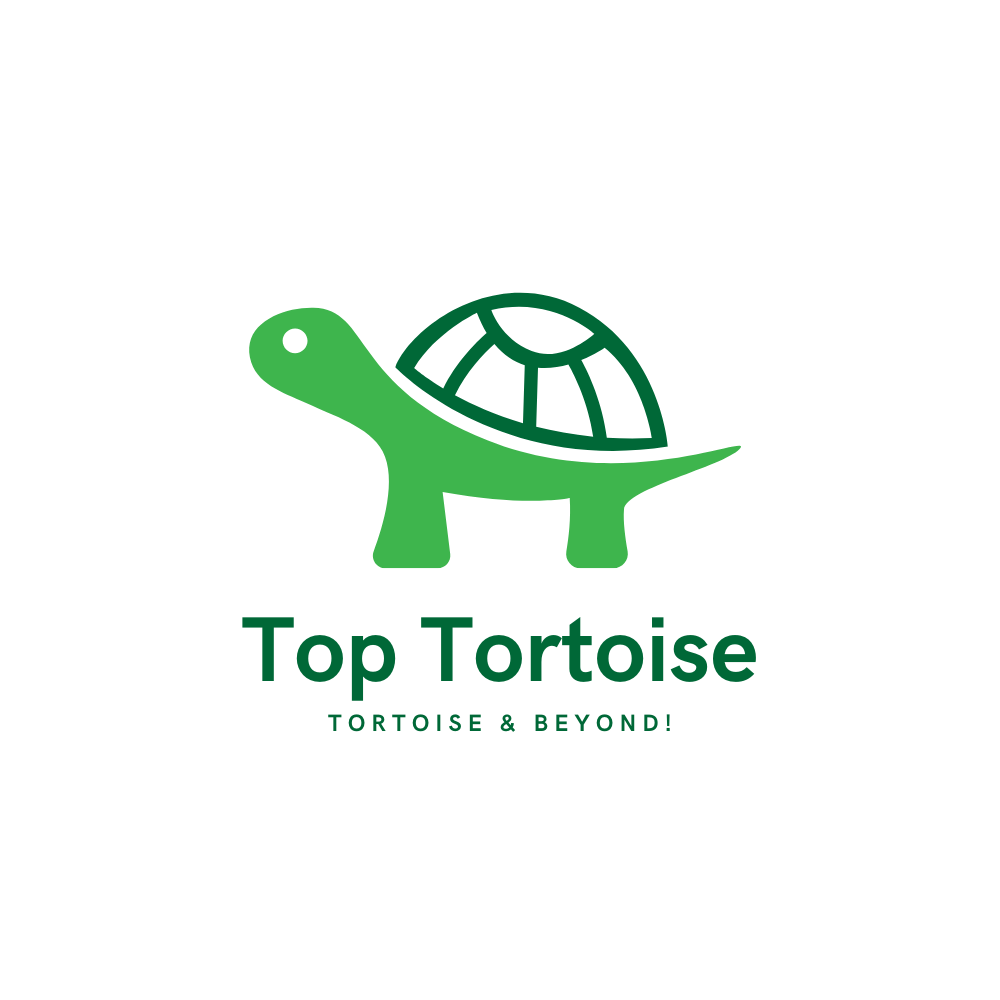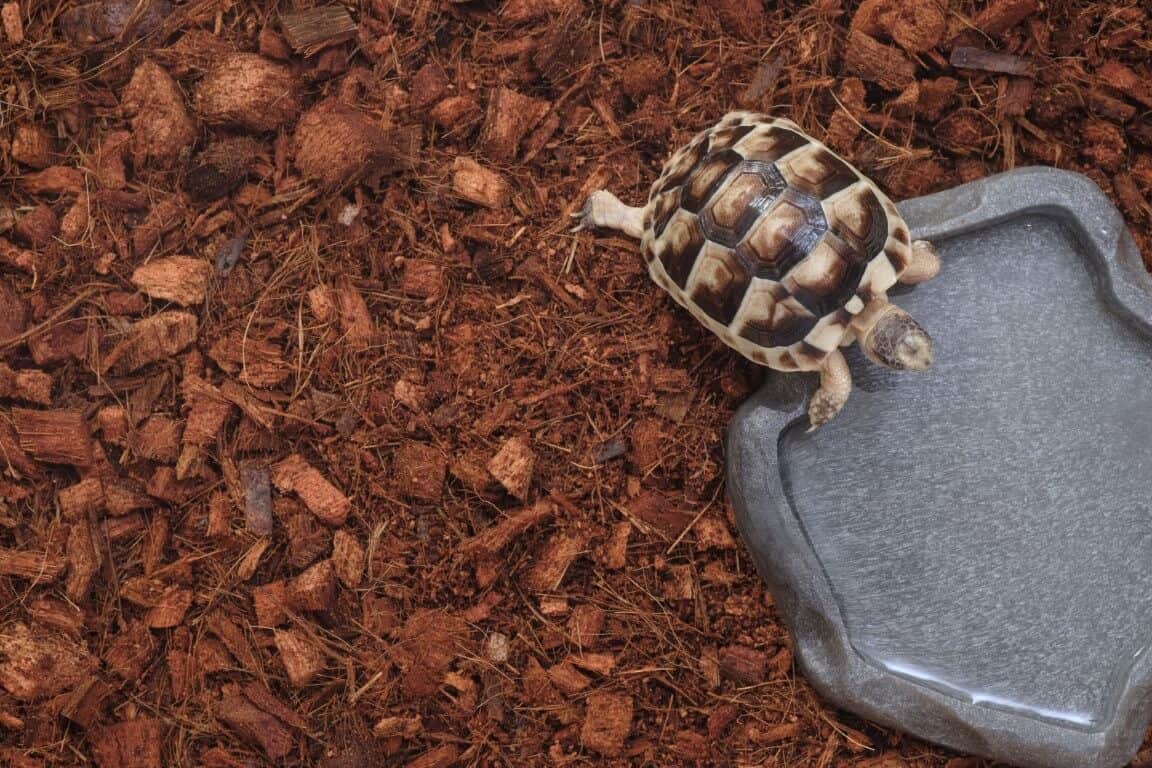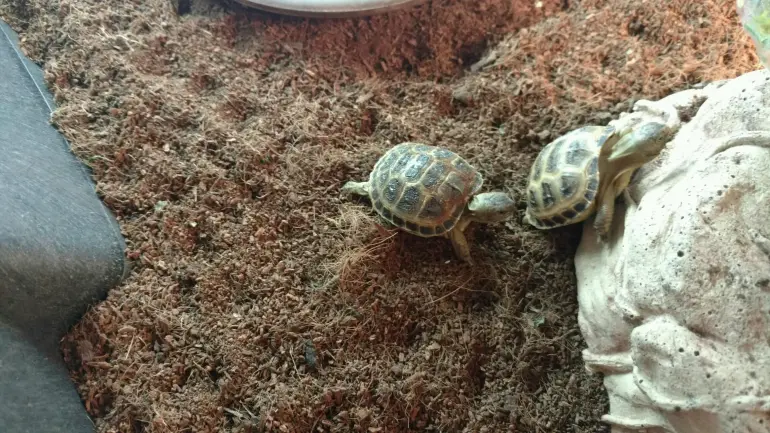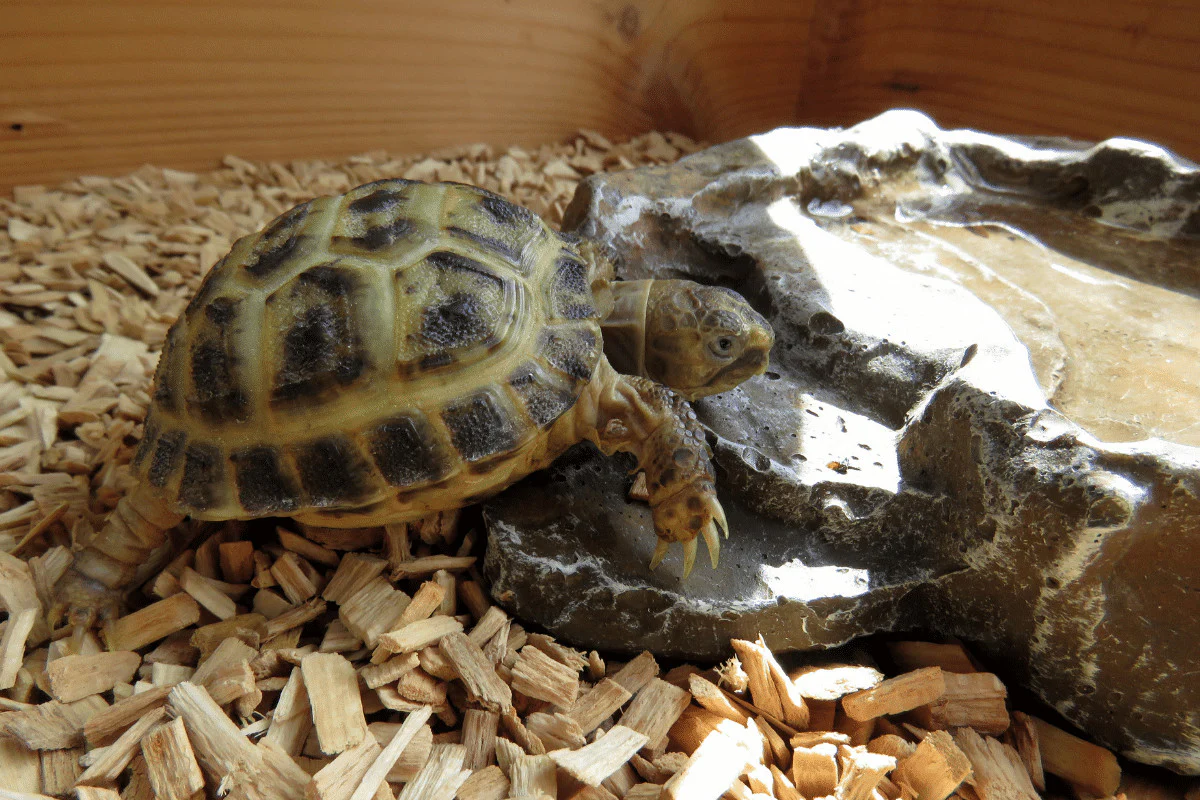Everything You Need to Know About Providing the Best Bedding for Your Pet
Choosing the right tortoise substrates is crucial for their overall health and well-being. The substrate serves as the foundation for your tortoise’s enclosure, providing a comfortable and natural environment for them to live in. It also plays a key role in maintaining proper humidity levels and promoting natural behaviors such as burrowing and foraging.
Additionally, the right substrate can help prevent health issues such as shell rot and respiratory problems. Therefore, it is essential to carefully consider the type of substrate you use for your tortoise to ensure their long-term health and happiness.
When selecting a substrate for your tortoise, it is important to consider their specific species and natural habitat. Different species of tortoises have different substrate requirements based on their natural environment. For example, desert-dwelling tortoises may require a dry, sandy substrate, while forest-dwelling tortoises may benefit from a more moist and organic substrate. By choosing a substrate that mimics their natural habitat, you can help create a comfortable and enriching environment for your tortoise to thrive in.
Natural Substrate Options for Tortoises
There are several natural substrate options that are suitable for tortoises, depending on their species and habitat requirements. One popular natural substrate option is coconut coir, which is made from the fibrous husk of coconuts. Coconut coir is a great choice for tortoises that require a more humid environment, as it retains moisture well and helps maintain proper humidity levels in the enclosure.
Another natural substrate option is cypress mulch, which is made from the bark of cypress trees. Cypress mulch is ideal for tortoises that require a drier environment, as it provides good drainage and helps prevent the growth of mold and bacteria.
For desert-dwelling tortoises, sand is a popular natural substrate option. However, it is important to use calcium-based sand specifically designed for reptiles, as regular sand can cause impaction if ingested.
Another natural substrate option for tortoises is topsoil, which can be mixed with other organic materials such as peat moss or sphagnum moss to create a more naturalistic environment. When using natural substrates, it is important to regularly monitor and maintain proper humidity levels to ensure the health and well-being of your tortoise.
| Substrate | Advantages | Disadvantages | Suitable for | Additional Notes |
|---|---|---|---|---|
| Soil/Topsoil | Natural, allows for burrowing and digging, retains moisture well | Can be messy, may contain pesticides or fertilizers, can harbor bacteria | All species, especially burrowing types | Use organic topsoil without additives. Sterilize before use to kill any potential pathogens. |
| Coconut Coir | Holds moisture well, creates humid microclimate, safe if ingested | Can be messy, may require frequent replacement, can be dusty | Tropical and humid-loving species | Use loose coconut coir or compressed bricks. Rinse thoroughly before use to remove dust. |
| Sphagnum Moss | Soft and comfortable, holds moisture well, good for humid hides | Can be expensive, needs frequent replacement, not suitable for digging | Tropical and humid-loving species | Use in combination with other substrates to create a humid microclimate. |
| Cypress Mulch | Readily available, retains some moisture, relatively inexpensive | Can be dusty, may contain harmful chemicals, not suitable for digging | Mediterranean species, desert species (in moderation) | Choose untreated cypress mulch to avoid chemicals. Use in a well-ventilated enclosure to prevent mold growth. |
| Orchid Bark | Retains moisture, provides good drainage, safe if ingested | Can be sharp, not suitable for digging, may need frequent replacement | Tropical and humid-loving species | Use fine-grade orchid bark to avoid injury. Combine with other substrates for a more varied environment. |
| Sand/Soil Mix | Natural, allows for some digging, provides good drainage | Can be dusty, may cause impaction if ingested in large amounts, not suitable for all species | Desert species, some Mediterranean species | Use play sand mixed with topsoil. Avoid using pure sand, as it can be difficult for tortoises to walk on. |
Artificial Substrate Options for Tortoises
In addition to natural substrate options, there are also artificial substrate options available for tortoises. One popular artificial substrate option is reptile carpet, which is made from a durable, washable material that can be easily cleaned and reused.
Reptile carpet is a great choice for tortoises that require a dry environment, as it does not retain moisture like natural substrates do. Another artificial substrate option is paper-based bedding, which is made from recycled paper products. Paper-based bedding is a safe and affordable option for tortoises, as it does not contain any harmful chemicals or additives.
Another artificial substrate option for tortoises is ceramic tile, which provides a solid and easy-to-clean surface for their enclosure. Ceramic tile is ideal for tortoises that require a dry environment, as it does not retain moisture like natural substrates do. Additionally, ceramic tile can help wear down your tortoise’s nails naturally as they move around their enclosure.
When using artificial substrates, it is important to regularly clean and sanitize the enclosure to prevent the growth of bacteria and mold. It is also important to provide enrichment items such as hides and basking spots to ensure your tortoise’s physical and mental well-being.
| Substrate | Advantages | Disadvantages | Suitable for | Additional Notes |
|---|---|---|---|---|
| Reptile Carpet | Easy to clean, soft and comfortable, comes in various colors and textures | Can harbor bacteria if not cleaned regularly, may be ingested by some tortoises | Indoor enclosures | Choose a carpet specifically designed for reptiles. Avoid carpets with loops or loose fibers that could cause injury or be ingested. |
| Indoor/Outdoor Carpet | Durable, easy to clean, allows for some digging, suitable for outdoor enclosures | Can get hot in direct sunlight, may not be as aesthetically pleasing as natural substrates | Large or active tortoises | Choose a non-toxic, porous carpet that allows for proper drainage. Avoid carpets with glued-on backings. |
| Newspaper | Inexpensive, easy to clean, readily available | Not aesthetically pleasing, can become soggy quickly, not suitable for digging | Temporary or quarantine | Use unprinted newspaper to avoid ink exposure. Change frequently to maintain cleanliness and dryness. |
| Paper Towels | Soft and absorbent, easy to clean, sterile | Not aesthetically pleasing, can be expensive if used long-term, not suitable for digging | Temporary or quarantine | Use unbleached paper towels. Change frequently to prevent bacterial growth. |
| Butcher Paper | Inexpensive, easy to clean, provides a smooth surface for walking | Not aesthetically pleasing, can become soggy quickly, not suitable for digging | Temporary or quarantine | Use unbleached butcher paper. Change frequently to maintain cleanliness and dryness. |
| Shelf Liner | Easy to clean, comes in various colors and patterns | Can be slippery, may not be as comfortable as natural substrates, not suitable for digging | Indoor enclosures | Choose a non-adhesive shelf liner made from non-toxic material. Avoid textured or rough liners that could irritate your tortoise’s skin. |
| Rubber Matting | Durable, easy to clean, provides traction | Can be expensive, may not be as aesthetically pleasing as natural substrates | Indoor or outdoor enclosures | Choose a non-toxic, porous rubber matting that allows for proper drainage. Avoid matting with raised patterns that could trap debris or cause injury. |
| Ceramic Tiles | Easy to clean and disinfect, retains heat well | Can be slippery when wet, cold to the touch, not suitable for digging | Indoor enclosures | Use non-slip tiles or provide textured surfaces for traction. Combine with other substrates to create a more comfortable and enriching environment. Consider using a heat mat underneath to provide warmth. |
Considerations for Choosing the Best Substrate for Your Tortoise
When choosing the best substrate for your tortoise, there are several important considerations to keep in mind. First and foremost, it is essential to consider your tortoise’s specific species and natural habitat requirements. Different species of tortoises have different substrate needs based on their natural environment, so it is important to research and understand these requirements before making a decision. Additionally, it is important to consider the humidity levels in your tortoise’s enclosure, as some substrates retain moisture better than others.
Another important consideration when choosing the best substrate for your tortoise is their age and size. Young tortoises may require a softer substrate to prevent injury, while larger tortoises may benefit from a more solid surface such as ceramic tile. It is also important to consider the ease of maintenance and cleaning when choosing a substrate for your tortoise. Some substrates may require more frequent cleaning and replacement than others, so it is important to choose a substrate that fits your lifestyle and schedule. By carefully considering these factors, you can choose the best substrate for your tortoise that meets their specific needs and promotes their overall health and well-being.
Best Bedding Options for Tortoises
When it comes to choosing the best bedding options for your tortoise, there are several factors to consider. The type of bedding you choose will depend on your tortoise’s species, age, and natural habitat requirements. One popular bedding option for tortoises is coconut coir, which provides a soft and naturalistic surface for them to burrow and dig in. Coconut coir also retains moisture well, making it an ideal choice for tortoises that require a more humid environment.
Another popular bedding option for tortoises is cypress mulch, which provides good drainage and helps prevent the growth of mold and bacteria. Cypress mulch is a great choice for tortoises that require a drier environment, as it does not retain moisture like other substrates do. For desert-dwelling tortoises, calcium-based sand is a popular bedding option that mimics their natural habitat. However, it is important to use sand specifically designed for reptiles to prevent impaction if ingested.
How to Set Up the Ideal Tortoise Enclosure with the Right Substrate
Setting up the ideal tortoise enclosure with the right substrate is essential for promoting their overall health and well-being. When setting up your tortoise’s enclosure, it is important to provide a spacious and enriching environment that mimics their natural habitat as closely as possible. This includes choosing the right substrate that meets their specific species and habitat requirements. To set up the ideal tortoise enclosure with the right substrate, start by researching your tortoise’s specific species and natural habitat to understand their substrate needs.
Once you have chosen the appropriate substrate for your tortoise, it is important to provide a sufficient layer of bedding to allow them to burrow and dig as they would in the wild. The depth of the bedding will depend on your tortoise’s species and size, so be sure to research their specific requirements before adding the substrate to their enclosure. Additionally, it is important to provide enrichment items such as hides, basking spots, and plants to create a stimulating environment for your tortoise. By setting up the ideal tortoise enclosure with the right substrate, you can create a comfortable and enriching environment for your tortoise to thrive in.
Tips for Maintaining and Cleaning Tortoise Substrates
Maintaining and cleaning your tortoise’s substrates is essential for preventing the growth of bacteria and mold, as well as promoting their overall health and well-being. When maintaining and cleaning your tortoise’s substrates, it is important to regularly spot clean any soiled areas to prevent the buildup of waste and bacteria. This can be done using a small scoop or trowel to remove any feces or uneaten food from the substrate.
In addition to spot cleaning, it is important to regularly replace the bedding in your tortoise’s enclosure to prevent the growth of bacteria and mold. The frequency of bedding replacement will depend on the type of substrate you are using and your tortoise’s specific needs, so be sure to research and understand these requirements before making a decision. It is also important to regularly sanitize the enclosure and any enrichment items such as hides and basking spots to prevent the spread of disease and maintain a clean environment for your tortoise.
Conclusion
In conclusion, choosing the right substrate for your tortoise is essential for promoting their overall health and well-being. There are several natural and artificial substrate options available for tortoises, each with its own benefits and considerations. By carefully considering your tortoise’s species, age, size, and natural habitat requirements, you can choose the best substrate that meets their specific needs and promotes their overall health and well-being.
Additionally, setting up the ideal tortoise enclosure with the right substrate and maintaining and cleaning their substrates regularly are essential steps in providing a comfortable and enriching environment for your tortoise to thrive in. By following these tips and considerations, you can ensure that your tortoise has the best possible living environment that promotes their physical and mental well-being.
Originally posted 2024-07-02 03:19:56.



